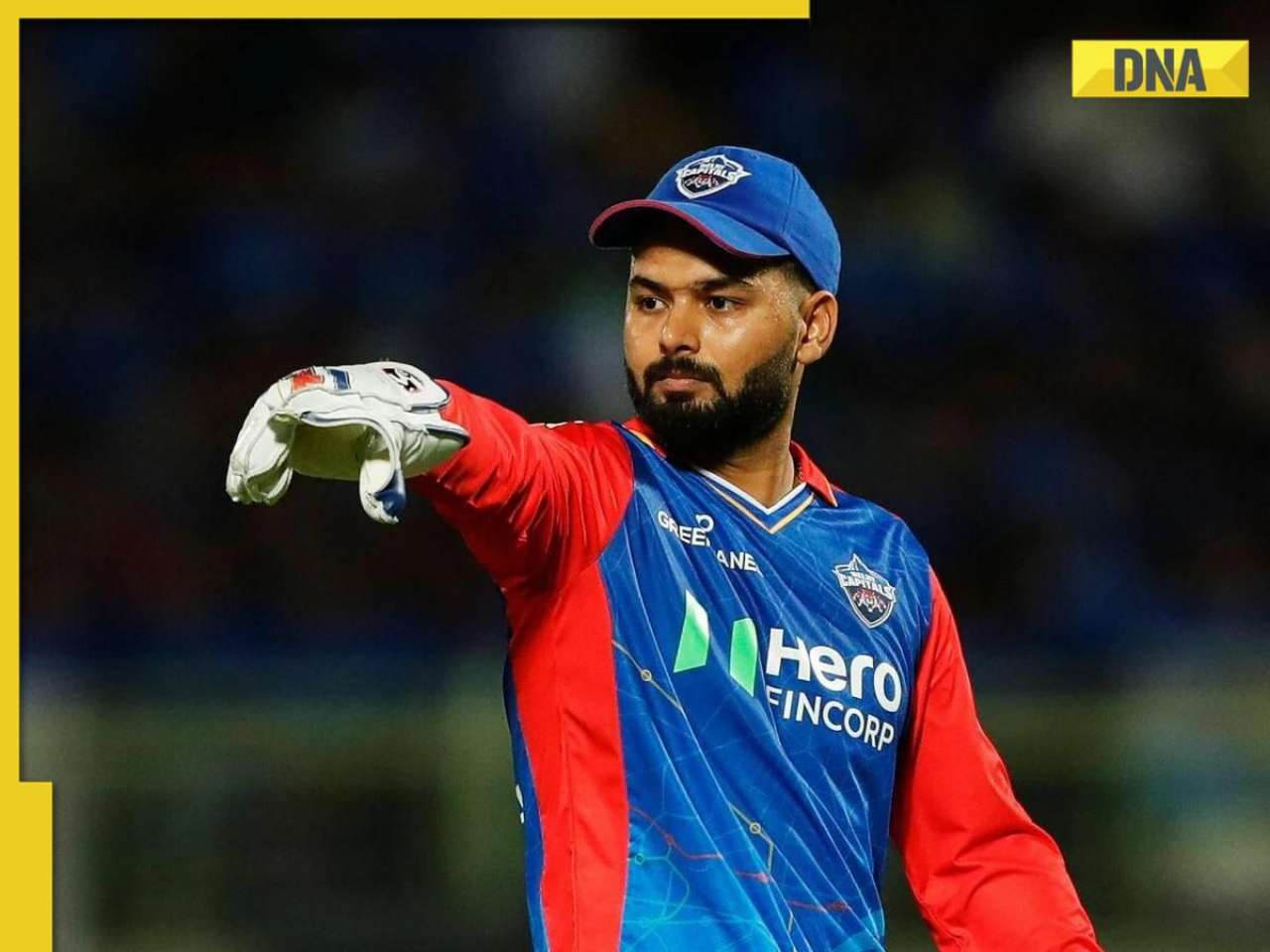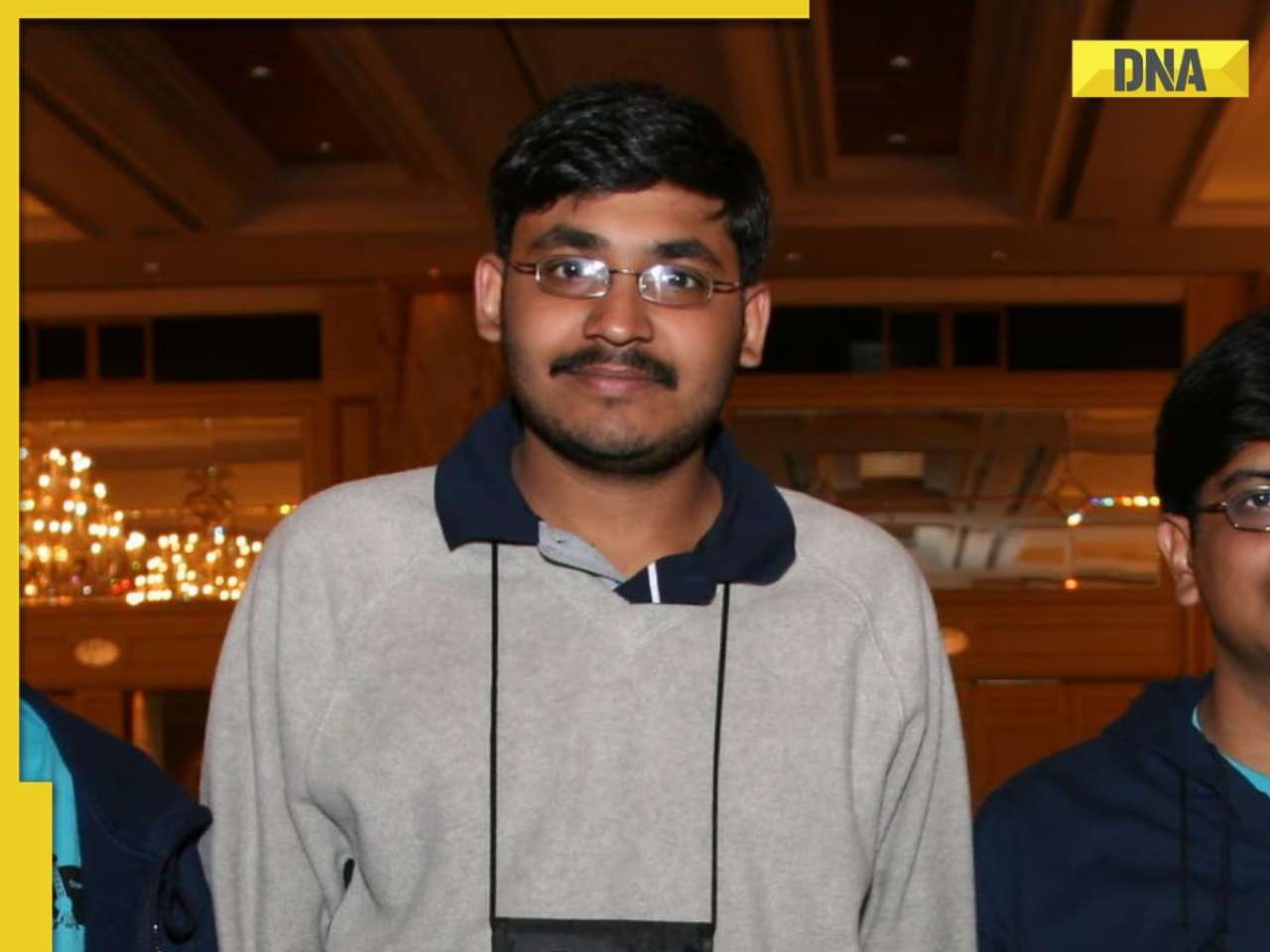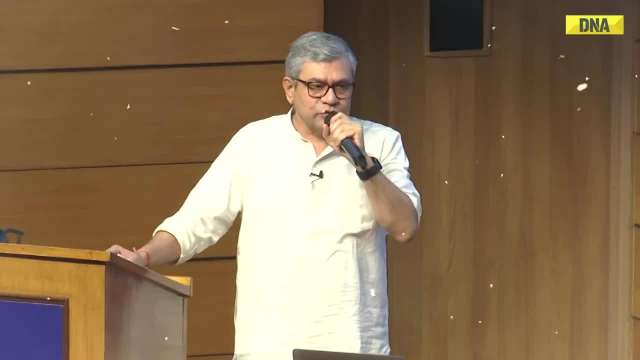The nuclear-powered submarine represents India's advancement in having a varied approach to nuclear capabilities, including weapons that can be launched from air, sea, and land.
On August 29, India's defense minister officiated the ceremony to launch the S3 Arighat, the nation's second nuclear-powered submarine built in India.
The nuclear-powered submarine represents India's advancement in having a varied approach to nuclear capabilities, including weapons that can be launched from air, sea, and land.
Meanwhile, the U.S. and its allies are looking to strengthen military ties with the Indian Navy because of shared concerns about rising tensions with China.
The main aim is to ensure constant sea-based nuclear defense, particularly against potential threats from China.
Arighat, meaning "slayer or defeater of enemies," along with its predecessor, the Arihant, marks the beginning of the Indian Navy's bold plan to create a fleet of nuclear-powered submarines equipped with nuclear missiles.
Instead of searching for enemy ships, ballistic missile submarines (called "boomers" or SSBNs) remain hidden and quietly wait in the water. They wait for a signal sent by national leaders through a very-low-frequency radio before launching a series of nuclear ballistic missiles at distant targets.
Due to India's long-standing and occasionally deadly border conflicts in the Himalayas, which go back to a 1962 war with China, INS Varsha, a secretive base on India's east coast, will house a fleet of ballistic missile submarines designed to specifically deter China.
INS Varsha is a new naval base being built under Project Varsha for the Indian Navy. It will be home to the navy's new fleet of nuclear submarines and ships. The base is located in Rambilli, about 50 kilometers from Visakhapatnam, where the Eastern Naval Command is headquartered.
Nuclear reactors allow submarines like the Arihant to remain underwater for extended periods, up to 50 days, without needing to surface. In contrast, conventional submarines rely on diesel engines that require air to operate. Because they can't run these engines underwater, they must surface or use a snorkel every few days to take in air and recharge their batteries, increasing the risk of being detected. The batteries power the submarine while it's submerged, making this surfacing process necessary for traditional subs.
This means active boomer submarines are largely safe from surprise attacks unless they are specifically tracked and followed by enemy submarines.
India's "pocket boomers," with a displacement of 6,000 tons, are much smaller compared to similar submarines from other navies. They also carry shorter-range ballistic missiles, highlighting the difficulties India faces in developing, testing, and expanding these advanced technologies.
Although Arighat was launched in 2017, it did not start sea trials until 2022, and its commissioning ceremony took place three years later than originally scheduled.
In the 2010s, media reports suggested that Arighat would have a stronger nuclear reactor and carry twice the number of nuclear missiles compared to Arihant.
However, Arighat still uses the same 83-megawatt CLWR-B1 pressurized water reactor and is equipped with four medium-range K-4 missiles in its vertical launch tubes.
Some reports mention that the alternative payload of 12 short-range K-15 missiles (three missiles per tube) has stayed the same, while others suggest it may have been increased.
There are definitely significant improvements in reliability and efficiency for regular operations, as the earlier Arihant is seen more as a technology demonstration and training vessel. Reports also indicate that Arighat has better acoustic dampening for increased stealth.
Arighat, like Arihant, has a double-hulled design, with an outer titanium shell surrounding the main hull, which contains seven main compartments.
Both submarines also have three 533-millimeter tubes for wire-guided torpedoes used for self-defense, along with two auxiliary thrusters and one retractable emergency thruster.
The ovoid shape of this class is more streamlined compared to other submarines that have boxy, protruding missile compartments.
India’s development of the Arihant was supported by technology transfers from Russia, including the leasing of two Russian Akula-class nuclear-powered submarines, renamed Chakra I and II.
Arihant’s external design seems to be heavily influenced by Russia’s Kilo-class diesel-electric submarines, which India also operates.
However, internal systems like radar, combat, and torpedo defense were either made in India or obtained from British, French, and Israeli companies.
Currently, China has more nuclear weapons capable of reaching all parts of India than India has that can reach central or eastern China.This includes six larger Type-094 submarines equipped with longer-range JL-2 or JL-3 missiles.
In addition to border clashes, China is the main ally of India’s rival, Pakistan, and its Pacific-based navy is expanding patrols in the Indian Ocean, supported by a Chinese base in Djibouti, located to India’s west.
Even with Arighat, India’s sea-based nuclear deterrence is still developing. At least three submarines are required to make sure one is always at sea throughout the year.Even so, having more submarines is ideal to account for maintenance or losses in combat and to launch larger missile salvos that can better penetrate enemy defenses.
The most crucial point is that Arighat’s K-15 missiles have a range of 466 miles, which means they cannot hit major targets in China from the Indian Ocean.To strike inland targets in neighboring Pakistan, an Indian submarine would need to get uncomfortably close to Pakistan's coastal defenses.
However, the four 12-meter-long K-4 intermediate-range missiles on the submarines are more effective, with a range of 2,500 miles (4,000 km), allowing them to target important locations in China.The 19-ton K-4 missile has been tested six times from underwater pontoon launchers, with only one failure in 2017, and was successfully launched by Arihant in 2016 while partially submerged.
To achieve a reliable, continuous sea-based deterrence, the Indian Navy needs more, larger submarines equipped with missiles that have a longer range and can carry more warheads.India's plan for nuclear-armed submarines is progressing in exactly that direction.
The slightly bigger and upgraded submarine, S4 Aridaman, which is 125 meters long and weighs 7,700 tons, is expected to be delivered next year. One or two similar but enhanced S4* submarines are set to follow.
The S4-series submarines can carry twice as many missiles, holding up to eight medium-range ones. They are also compatible with the improved K-5 missile, which has a range of up to 3,100 miles (5,000 km), allowing the submarines to remain hidden in a larger area of the Indian Ocean while still being able to target important locations.
Next year, India is expected to start building the first of four large 15,000-ton S5 submarines, which will be able to carry 12–16 longer-range K-6 missiles (still in the concept stage) with multiple independently targetable nuclear warheads. India first tested this technology in March.
The Indian Navy is also set to acquire two or three 7,000-ton nuclear-powered attack submarines by around 2032. These submarines will help protect India’s ballistic missile submarines and aircraft carriers from Chinese attack submarines entering the Indian Ocean.
The biggest challenge is creating a 190-megawatt reactor that can power larger and faster submarines while staying compact, safe, and quiet.In 2018, India’s Bhabha Atomic Research Center in Mumbai designed this type of reactor, but a land-based prototype has not yet been built.
If India’s S4 and S5 submarine programs stay on track, the gaps in its undersea nuclear deterrence could be quickly addressed—unless they face similar delays as Arighat.
It's important to mention that both India and China follow a No-First-Use policy, meaning they claim their nuclear weapons would only be used in response to a nuclear attack, not as an initial strike.If both countries follow their policies (which significantly influence how their nuclear forces are trained and organized), they should never have to use nuclear weapons.
However, national leaders can change their stance on nuclear policies, and there is usually a lack of trust between military rivals.For now, we can hope that India's steps to balance nuclear power will make a war between the two largest countries less likely, not more.
(The author of this article is a Defence, Aerospace & Political Analyst based in Bengaluru. He is also Director of ADD Engineering Components, India, Pvt. Ltd, a subsidiary of ADD Engineering GmbH, Germany. You can reach him at: girishlinganna@gmail.com)
(Disclaimer: The views expressed above are the author's own and do not reflect those of DNA)
![submenu-img]() 'Soye hai sab log': Skipper Rohit Sharma fumes at teammate during 1st India vs Bangladesh Test
'Soye hai sab log': Skipper Rohit Sharma fumes at teammate during 1st India vs Bangladesh Test![submenu-img]() Delhi Capitals confirm Rishabh Pant as their top retention for IPL 2025: Report
Delhi Capitals confirm Rishabh Pant as their top retention for IPL 2025: Report![submenu-img]() Moon and Venus Orbiter Journeys, Space Station, Gaganyaan Mission
Moon and Venus Orbiter Journeys, Space Station, Gaganyaan Mission![submenu-img]() 'So much tension and stress...': Father of EY Employee who died of 'overwork'
'So much tension and stress...': Father of EY Employee who died of 'overwork'![submenu-img]() Watch: Shubman Gill's father gives priceless reaction to his son's exceptional century in Chennai Test
Watch: Shubman Gill's father gives priceless reaction to his son's exceptional century in Chennai Test![submenu-img]() Maharashtra Elections 2024: महाराष्ट्र में चुनाव से पहले महायुति में संग्राम, अठावले की 10-12 सीटों की मांग
Maharashtra Elections 2024: महाराष्ट्र में चुनाव से पहले महायुति में संग्राम, अठावले की 10-12 सीटों की मांग![submenu-img]() जंतर-मंतर से RSS पर Arvind Kejriwal ने दागे 5 सवाल, '75 साल में रिटायर होने वाला नियम मोदीजी पर लागू होगा?'
जंतर-मंतर से RSS पर Arvind Kejriwal ने दागे 5 सवाल, '75 साल में रिटायर होने वाला नियम मोदीजी पर लागू होगा?'![submenu-img]() Haryana Elections 2024: हरियाणा में CM Yogi की दो टूक, 'दंगा करने वालों की 7 पुश्तों की कमाई होगी जब्त'
Haryana Elections 2024: हरियाणा में CM Yogi की दो टूक, 'दंगा करने वालों की 7 पुश्तों की कमाई होगी जब्त'![submenu-img]() Devara Release Trailer: खून से लाल समंदर में लगा लाशों का ढेर, भैरा और देवरा बने जानी दुश्मन, हैरान कर देगा JR.NTR का अंदाज
Devara Release Trailer: खून से लाल समंदर में लगा लाशों का ढेर, भैरा और देवरा बने जानी दुश्मन, हैरान कर देगा JR.NTR का अंदाज![submenu-img]() बिहार सरकार का युवाओं को दिवाली तोहफा, पुलिस महकमे में होने वाली है बंपर भर्ती
बिहार सरकार का युवाओं को दिवाली तोहफा, पुलिस महकमे में होने वाली है बंपर भर्ती![submenu-img]() Ford to return to India after 2 years with reopening of....
Ford to return to India after 2 years with reopening of....![submenu-img]() Maruti Suzuki launches new Swift CNG, check price, mileage, other features
Maruti Suzuki launches new Swift CNG, check price, mileage, other features![submenu-img]() ‘30 LPA, 3BHK, no in-laws’: Woman earning Rs 1.32 lakh salary lists demands for future husband, netizens say...
‘30 LPA, 3BHK, no in-laws’: Woman earning Rs 1.32 lakh salary lists demands for future husband, netizens say...![submenu-img]() In a big EV push, Centre launches Rs 10900 crore PM E-Drive scheme to replace…
In a big EV push, Centre launches Rs 10900 crore PM E-Drive scheme to replace…![submenu-img]() World’s longest car has helipad, swimming pool, mini-golf course, can seat over…; it cost…
World’s longest car has helipad, swimming pool, mini-golf course, can seat over…; it cost…![submenu-img]() Meet boy, who cleared JEE Advanced with AIR 99, then dropped out of IIT counselling due to...
Meet boy, who cleared JEE Advanced with AIR 99, then dropped out of IIT counselling due to...![submenu-img]() Meet man, IIT graduate who was hired at Rs 100 crore salary but was fired within a year, he is now...
Meet man, IIT graduate who was hired at Rs 100 crore salary but was fired within a year, he is now...![submenu-img]() Meet man who passed JEE Advanced with AIR 1, completed B.Tech from IIT Bombay, is now pursuing…
Meet man who passed JEE Advanced with AIR 1, completed B.Tech from IIT Bombay, is now pursuing…![submenu-img]() Meet man, whose father's death encouraged him to quit IAS job, create multi-crore company, he is...
Meet man, whose father's death encouraged him to quit IAS job, create multi-crore company, he is...![submenu-img]() Meet woman, who scored 97% in class 12, secured 705 out of 720 marks in NEET exam, her AIR is...
Meet woman, who scored 97% in class 12, secured 705 out of 720 marks in NEET exam, her AIR is...![submenu-img]() Congress President Kharge Slams & Opposes 'One Nation, One Election' Proposal, Calls It Impractical
Congress President Kharge Slams & Opposes 'One Nation, One Election' Proposal, Calls It Impractical![submenu-img]() Why 'One Nation One Election' Is important? Ashwini Vaishnaw Explains After It Gets Cabinet Approval
Why 'One Nation One Election' Is important? Ashwini Vaishnaw Explains After It Gets Cabinet Approval![submenu-img]() Jammu Kashmir Assembly Election 2024 Phase 1 Highlights: What Happened In First phase In J&K Polls?
Jammu Kashmir Assembly Election 2024 Phase 1 Highlights: What Happened In First phase In J&K Polls?![submenu-img]() One Nation One Election: Centre Clears Proposal, Bill To Be Introduced In Winter Session | Modi 3.0
One Nation One Election: Centre Clears Proposal, Bill To Be Introduced In Winter Session | Modi 3.0![submenu-img]() Haryana Elections 2024: Is BJP Set To Lose In Haryana? Anti-Incumbency And Other Factors Analysed
Haryana Elections 2024: Is BJP Set To Lose In Haryana? Anti-Incumbency And Other Factors Analysed![submenu-img]() This country once ruled half of the world, now is in 100% debt, here are other developed nations facing similar issue
This country once ruled half of the world, now is in 100% debt, here are other developed nations facing similar issue![submenu-img]() Meet Mukesh Ambani, Ratan Tata's competitor, who runs business worth Rs 70000000000, she is...
Meet Mukesh Ambani, Ratan Tata's competitor, who runs business worth Rs 70000000000, she is...![submenu-img]() Revised LTC rules: Air travel relaxation, new changes in travelling perks for THESE govt employees, check details
Revised LTC rules: Air travel relaxation, new changes in travelling perks for THESE govt employees, check details![submenu-img]() Meet woman, richer than superstar husband who charges Rs 100 crore per film, her net worth is Rs...
Meet woman, richer than superstar husband who charges Rs 100 crore per film, her net worth is Rs...![submenu-img]() Billionaire Mark Cuban says he would buy X 'in a heartbeat', Elon Musk's cheeky response goes viral
Billionaire Mark Cuban says he would buy X 'in a heartbeat', Elon Musk's cheeky response goes viral![submenu-img]() NASA Nebula: 5 mesmerising images of Red Spider, Crab, Orian Nebulae captured by NASA's Hubble Telescope
NASA Nebula: 5 mesmerising images of Red Spider, Crab, Orian Nebulae captured by NASA's Hubble Telescope![submenu-img]() 5 best places to visit in India this October
5 best places to visit in India this October![submenu-img]() This film rejected by Rajesh Khanna made Feroz Khan a superstar, was delayed for a year, superstar had to..
This film rejected by Rajesh Khanna made Feroz Khan a superstar, was delayed for a year, superstar had to..![submenu-img]() Meet Sridevi’s ‘daughter’, one of Pakistan’s highest-paid actresses, who is likely to star opposite Prabhas in...
Meet Sridevi’s ‘daughter’, one of Pakistan’s highest-paid actresses, who is likely to star opposite Prabhas in...![submenu-img]() 7 foods named after Indian cities
7 foods named after Indian cities![submenu-img]() Moon and Venus Orbiter Journeys, Space Station, Gaganyaan Mission
Moon and Venus Orbiter Journeys, Space Station, Gaganyaan Mission![submenu-img]() 'So much tension and stress...': Father of EY Employee who died of 'overwork'
'So much tension and stress...': Father of EY Employee who died of 'overwork'![submenu-img]() 'Stopped road works, medicines, garbage collection....': Delhi CM Atishi hits out at BJP, vows to resume all work
'Stopped road works, medicines, garbage collection....': Delhi CM Atishi hits out at BJP, vows to resume all work![submenu-img]() Tirupati laddu row: Temple trust's big assurance to devotees amid ‘beef tallow’ in prasadam, says 'divinity, purity of..
Tirupati laddu row: Temple trust's big assurance to devotees amid ‘beef tallow’ in prasadam, says 'divinity, purity of..![submenu-img]() 'BJP spreading lies, desperate to...': Rahul Gandhi breaks silence on his Sikh remark in US
'BJP spreading lies, desperate to...': Rahul Gandhi breaks silence on his Sikh remark in US












































)
)
)
)
)
)
)
)
)
)
)
)
)
)
)





)
)
)
)
)
)